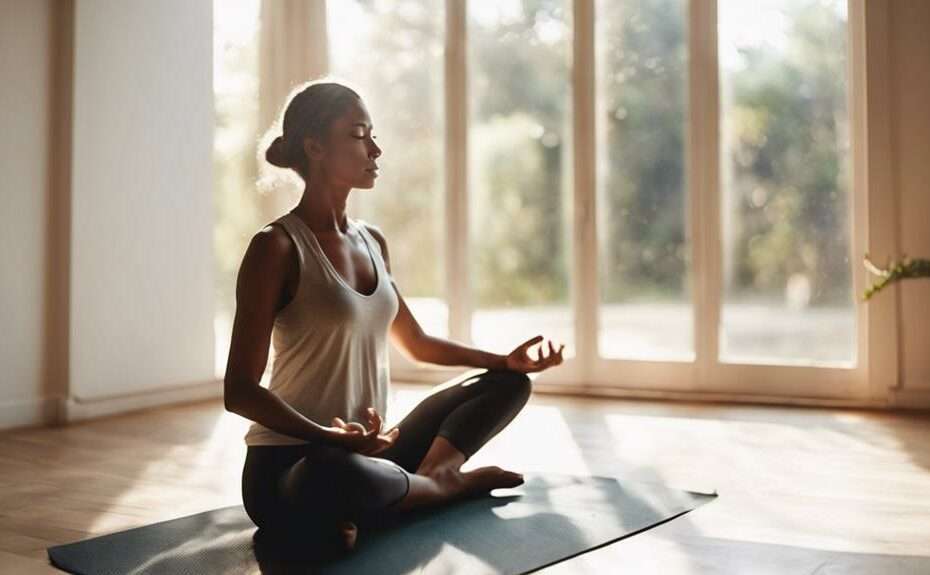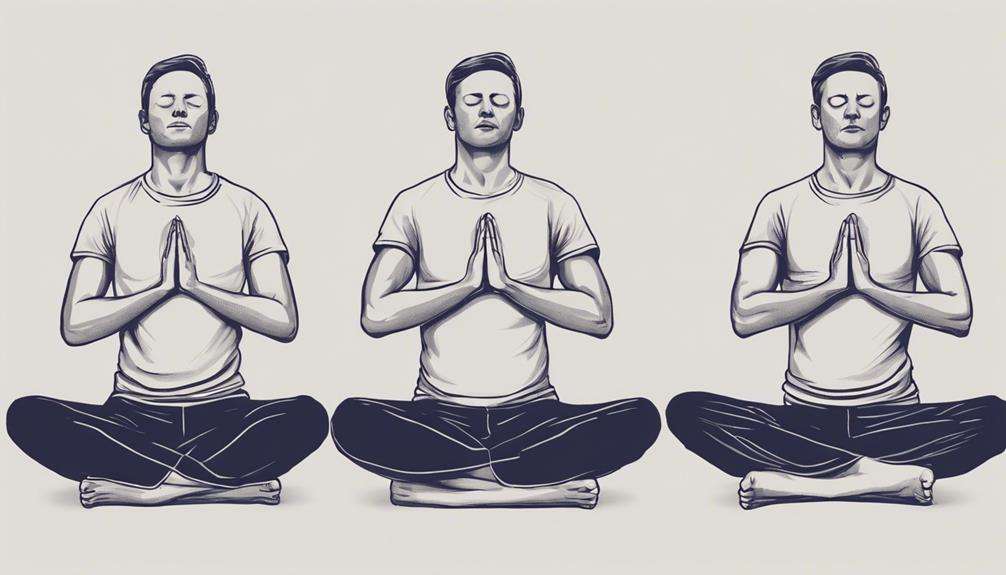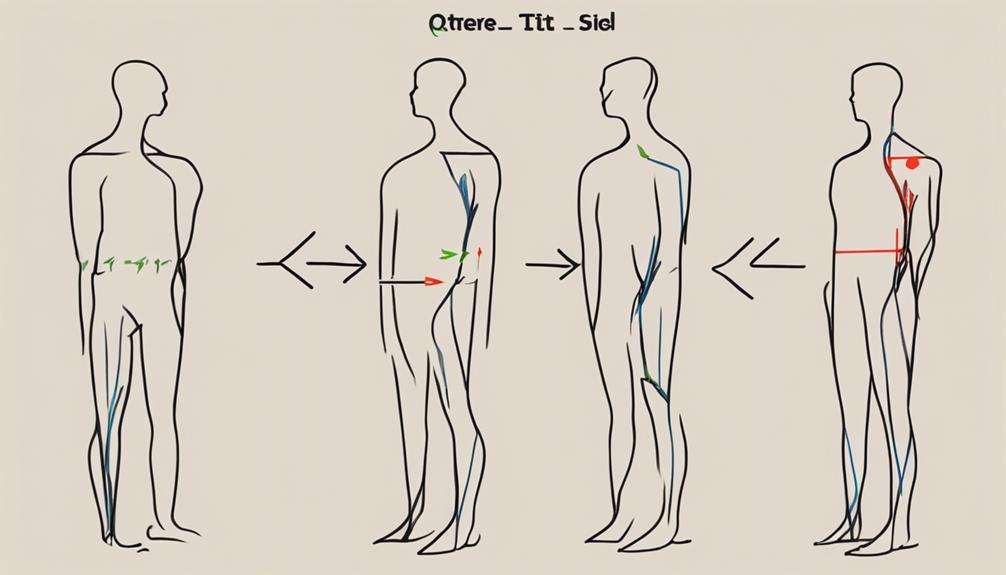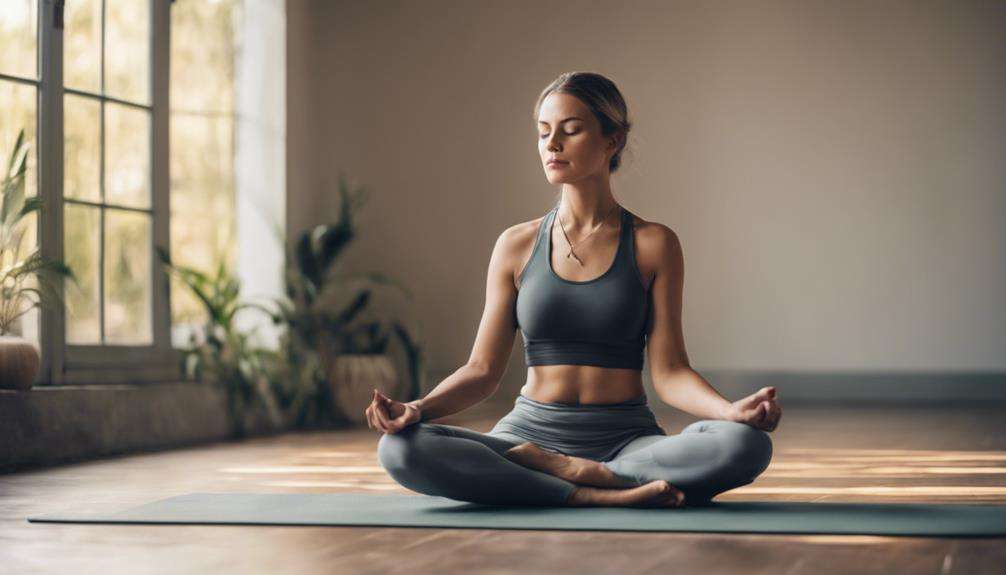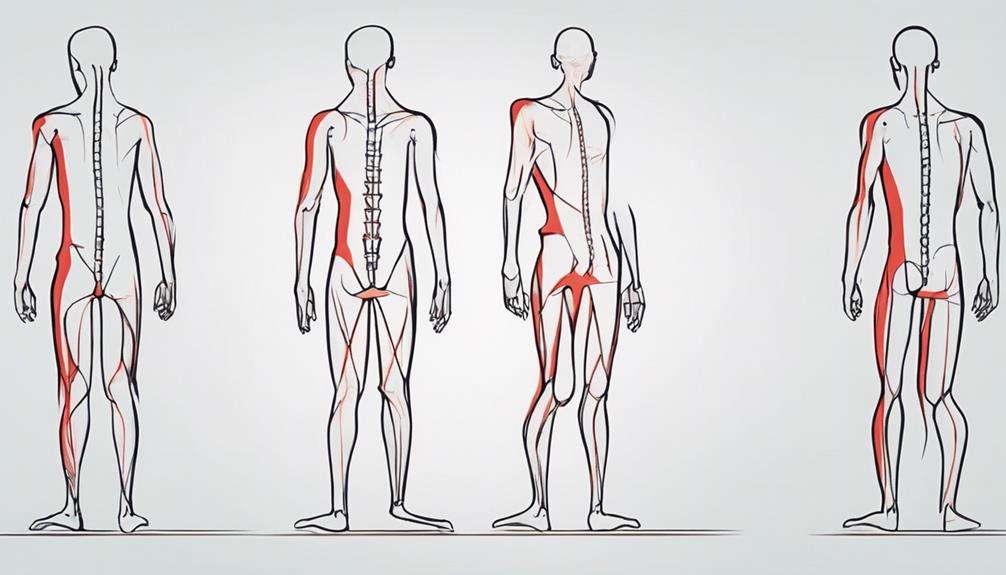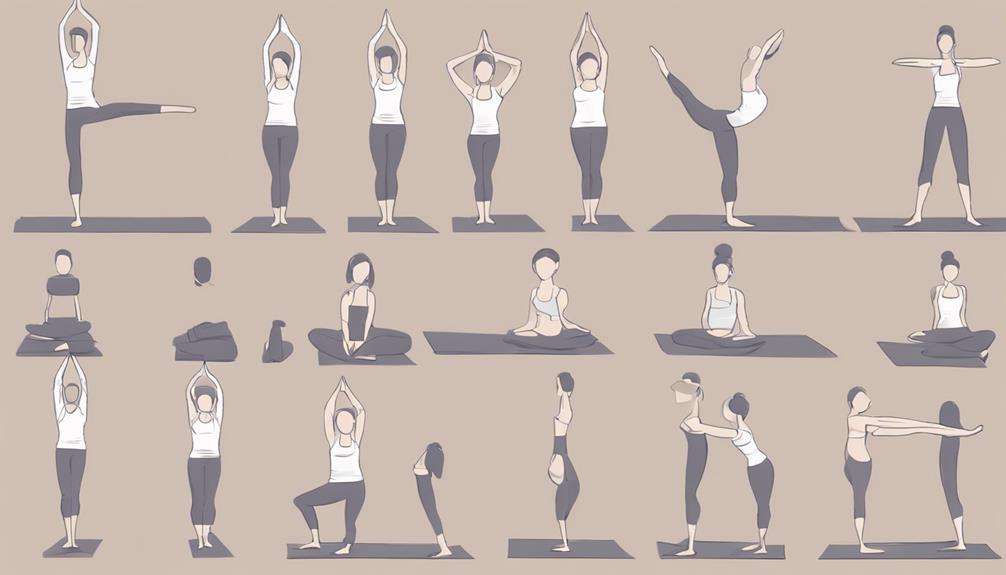When it comes to enhancing your posture through meditation and yoga, think of your spine as the pillar supporting your body's alignment. By incorporating mindful practices, you can gradually strengthen and improve your posture.
But how exactly can these ancient techniques aid in achieving a more upright stance and better overall well-being? Let's explore the subtle yet transformative ways in which meditation and yoga can positively influence your posture and ultimately, your physical and mental health.
Key Takeaways
- Mindful alignment correction enhances posture in meditation and yoga.
- Engage core muscles for proper spinal alignment and stability.
- Use props like cushions for optimal posture support.
- Focus on shoulder relaxation and hand positioning for improved posture.
Benefits of Meditative Postures
Exploring the benefits of various meditative postures can greatly enhance your practice by providing stability and comfort for your meditation sessions. When it comes to meditation, the posture you choose plays a significant role in the quality of your practice.
Sitting meditative postures like Padmasana and Ardha Padmasana, as highlighted in the Yoga Sutras, emphasize the importance of a steady and comfortable seat for meditation. These ground-sitting postures offer a stable base that allows you to focus inward without distractions. Additionally, standing meditation, commonly practiced in Chinese martial arts, provides an alternative for those who may find sitting cross-legged uncomfortable or challenging.
Alignment Correction Through Meditation
Improving alignment through regular meditation practice involves cultivating mindful awareness of your body's positioning and making adjustments for better posture. When practicing seated meditation, pay attention to your sitting posture. Make sure your back is straight, shoulders relaxed, and feet flat on the floor.
Mindfulness in meditation enables you to detect any misalignments, such as slouching or leaning to one side, and correct them promptly. Consistent meditation practice strengthens the mind-body connection, allowing you to be more attuned to how your body is positioned throughout the day.
By incorporating alignment correction into your meditation routine, you can gradually improve your posture over time.
Remember that meditation isn't just about mental focus but also about physical alignment. Use this practice to bring attention to your body's positioning and make the necessary adjustments for better alignment. Over time, you'll find that your posture improves, not just during meditation but in your daily activities as well.
Spinal Alignment in Yoga Practice
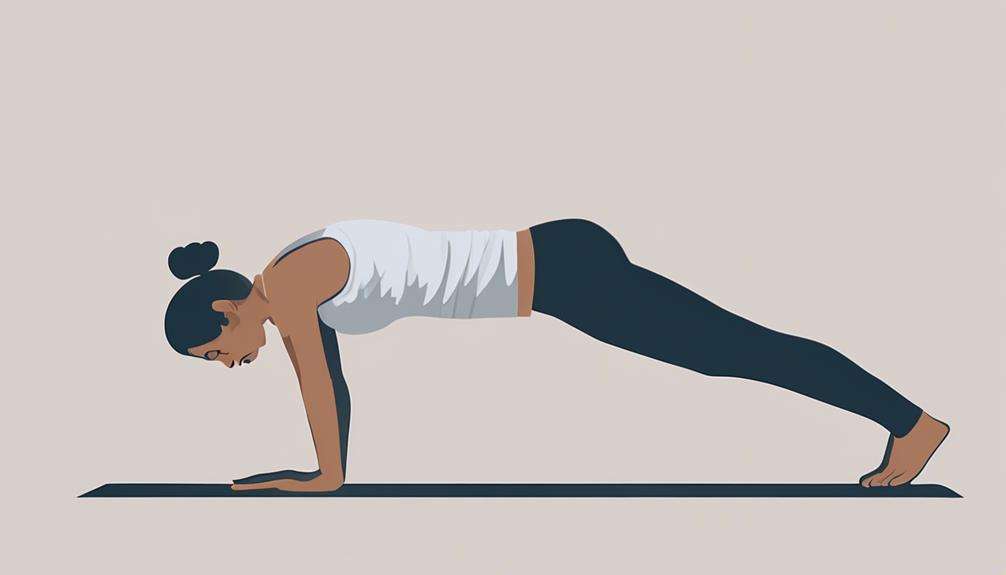
When focusing on spinal alignment in yoga practice, maintaining the natural curves of your spine is essential for comfort and stability. Sitting cross-legged on a meditation seat can help align your spine properly by encouraging an upright posture and engaging your core muscles to support the natural curvature of the spine. Engaging these core muscles not only aids in spinal alignment but also enhances overall posture, reducing the risk of strain on your back during yoga poses.
Yoga poses such as Mountain pose and Sphinx pose are beneficial for aligning the spine correctly, promoting good posture, and increasing body awareness. Additionally, emphasizing the alignment of your head over your spine in yoga practice can prevent neck pain and help maintain a balanced posture. By mindfully focusing on spinal alignment during yoga sessions, you can develop a stronger mind-body connection, which not only improves your overall posture but also supports the smooth flow of energy throughout your body.
Posture Improvement Techniques
To enhance your posture effectively, incorporating proper support with a zafu meditation cushion and other props during practice is essential. These tools help align your spine correctly, allowing for a more comfortable and sustainable meditation or yoga session. In addition to using supportive cushions, practicing Yin Yoga can be beneficial for posture improvement. This style of yoga focuses on deep stretching and holding poses for an extended period, which can help engage core muscles and increase flexibility, ultimately contributing to better posture.
When engaging in seated meditation positions, such as Lotus, Burmese, or Seiza, pay close attention to your body alignment and hand positioning. Mindful awareness of these aspects, along with ensuring shoulder relaxation, is critical for improving your posture during meditation. By consistently incorporating these techniques into your practice, you can gradually strengthen the muscles that support proper alignment and develop healthier posture habits over time.
Meditative Practices for Correcting Alignment

In meditation and yoga practices, achieving correct alignment is fundamental for ensuring physical comfort and minimizing distractions. Whether you're sitting cross-legged on the floor or in a chair, maintaining proper alignment is essential.
Meditation teachers often emphasize the importance of keeping your back straight yet relaxed, allowing the spine to support the body effortlessly. When sitting cross-legged, guarantee that your knees are below your hips to avoid strain on the lower back. If sitting in a chair, plant your feet firmly on the ground and maintain a 90-degree angle at the knees to support proper alignment.
Pay attention to your hand placement, shoulder positioning, and chin alignment to create a balanced posture that enhances the mind-body connection. Additionally, directing your gaze softly downward or closing your eyes can help center your focus and promote relaxation during meditation.
Utilizing props like cushions or chairs can assist in achieving the best alignment, allowing you to fully engage in your meditation practice.
Frequently Asked Questions
Can You Fix Your Posture With Yoga?
Yes, you can fix your posture with yoga. Incorporate chair exercises, standing stretches, core strengthening, and focus on the mind-body connection. These practices help align your body, strengthen muscles, and improve posture over time.
What Yoga Pose Teaches Correct Posture?
Just like a sturdy oak tree in a gentle breeze, Tadasana, also known as Mountain Pose, teaches correct posture by aligning your spine, shoulders, and hips, promoting awareness of body positioning and improving alignment.
Which Posture in Yoga Is the Meditation Posture?
In yoga, the meditation posture is essential for reaping meditation benefits. It involves proper alignment, breathing techniques, and fosters a strong mind-body connection. Postures like Padmasana and Ardha Padmasana provide stability and focus for meditation practice.
How Do You Keep Your Spine Straight While Meditating?
You keep your spine straight while meditating by engaging your core for support, sitting comfortably on props, grounding through your sitting bones, relaxing shoulders, and making subtle adjustments mindfully. Breath, alignment, strength, and flexibility contribute to proper posture.
Conclusion
To sum up, by incorporating meditation and yoga into your daily routine, you can improve your posture and overall well-being.
Remember, straightening your spine is like laying a strong foundation for a building – it supports everything above it.
So, focus on alignment, engage in core-strengthening poses, and cultivate mindful awareness to enhance your posture and experience the benefits of a healthy body and mind.
Start today and feel the difference in your posture and inner peace.
